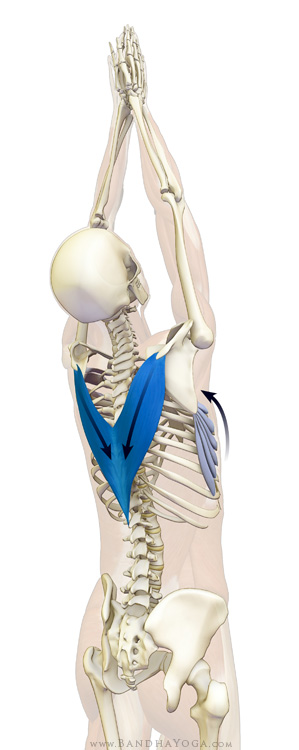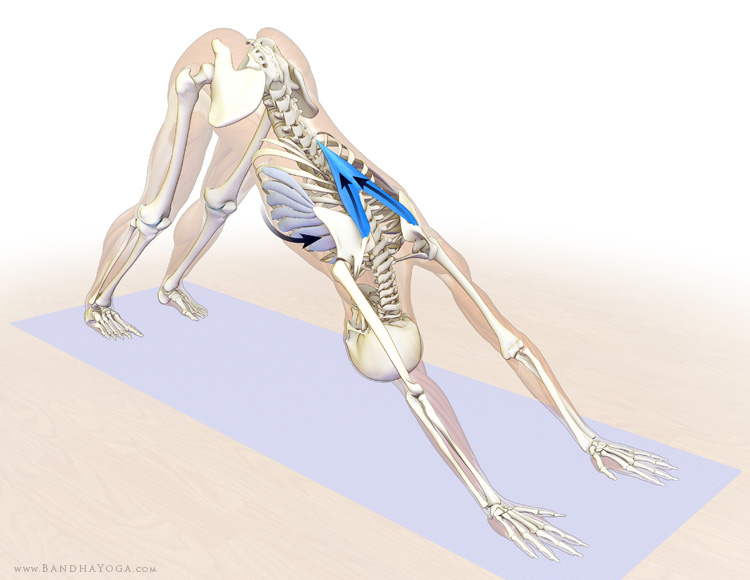Our last blog post used a video to illustrate shoulder kinematics in 3D and reviewed how to externally rotate the humerus to protect against impingement. This week we look at the scapular motion on the ribcage and the role of the lower third of the trapezius in drawing the shoulders away from the neck. This motion is called scapular depression, and it is frequently used in yoga, especially when the arms are overhead. Scapular depression helps to maintain freedom of movement in the cervical spine, either to lift the head and look up (in Urdhva Hastasana) or to relax the head down (as in Dog Pose).
When you raise the arms overhead, the scapulae elevate, protract, and rotate. This is through the action of several muscles, including the upper trapezius and the levator scapulae. Scapular rotation occurs through sequential actions of the upper, middle, and lower thirds of the trapezius and the serratus anterior. Protraction is mainly through the work of the serratus anterior.
Now, let’s focus on the lower third of the trapezius and its interaction with the serratus anterior when the arms are overhead. This part of the trapezius both depresses and retracts the scapulae. Thus, you can use it to draw the shoulders away from the neck and towards the midline. Retraction opposes the action of the serratus anterior in drawing the scapulae away from the midline. So combining these movements aids to stabilize the shoulder blades. Once the scapulae are fixed in place, the pull of the serratus anterior can be directed to expanding the thorax. In this manner, the serratus anterior becomes an accessory muscle of breathing and augments the diaphragm for inhalation.
Now the Cue . . .
It is fairly easy to depress and adduct the scapulae. Do this by drawing the shoulders down the back and towards the midline. Activating the serratus anterior to expand the thorax requires more training, but it can be learned quickly using the tips illustrated in Dandasana and Tadasana. Once you get the hang of engaging this muscle, use it to expand the chest while drawing the shoulders away from the neck. Try this first in Urdhva Hastasana, as shown. When you’re comfortable with drawing the shoulders down and expanding the chest in this pose, try it in Downward Facing Dog. Then combine these actions with engaging the wrist flexors and balancing the forearms. Click here to learn more about the anatomy and how to use this technique in Full Arm Balance as well.
Thanks for stopping by. Check back next week for Part III of Shoulder Kinematics in Yoga, in which we’ll discuss a pathological condition of the shoulder. Be sure to download volume two of our free interactive eBook. Also, don’t forget to tell your friends about our blog and to visit us on Facebook for your free chakra poster.


Комментариев нет:
Отправить комментарий